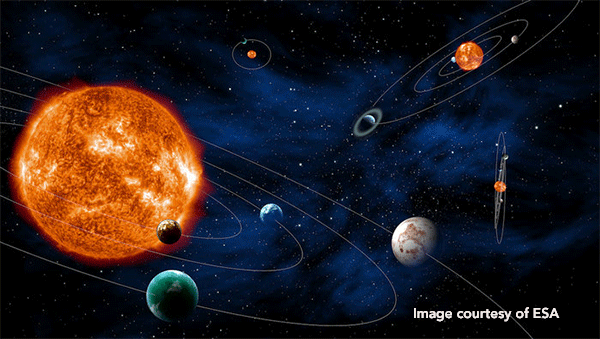Go-ahead for the PLATO exoplanet search mission

On 21 June, following three years of technical studies, the European Space Agency (ESA)’s Science Programme Committee officially greenlighted the PLATO (PLAnetary Transits and Oscillations of stars) mission.
PLATO, which is a medium-sized mission of ESA's Cosmic Vision 2015–2025 programme, caters for two key themes within this program: elucidate the conditions for planet formation and the emergence of life; and establish how the solar system works.
PLATO has been penciled in for a 2025 launch onboard a Soyuz rocket from Europe’s Kourou Spaceport (French Guiana). For a maximum of 8 years it will then orbit around the Earth-Sun L2 Lagrangian point, a virtual point in space lying 1.5 million kilometers from the Earth, looking sunwards. From there it will investigate over two hundred thousand relatively close stars in an area covering at least 10% and up to half of the sky, looking for stellar oscillations, subtle but regularly dimming as an orbiting planet eclipses its light. This search will involve 24 small telescopes and individual cameras.
GMV was formed part of the industrial team under OHB, taking on responsibility for requirement analysis, review of mission analysis, characterization of the rapid cameras and support for mission operations.
In combination with observations of radial stellar velocity from Earth, PLATO’s readings will enable the planet’s mass and radius to be calculated, and ipso facto its density. This will give clues to its composition. It will thus study thousands of planetary systems, with a special interest in finding Earth-like planets and super-Earths in the star’s habitable zone (i.e. the region around the star in which planets might contain surface water in liquid state).
The mission will also investigate seismic activity in stars to measure characteristics such as mass, radius and age.
Although we know there is an immense variety of planets orbiting a plethora of stars, finding the Earth’s twin, i.e., an Earth-like planet in the habitable zone of a Sun-like star, remains one of the stiffest challenges of this century. This feat may well be pulled off by PLATO.